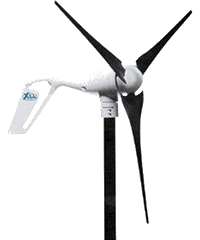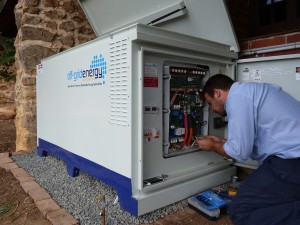

Domestic wind turbines have been a popular option for homeowners looking to generate their own energy, both on and off the grid. However, in recent years, the financial viability of domestic wind turbines has come into question. Here are a few reasons why domestic wind turbines may not be the best choice anymore:
The cost of installing a domestic wind turbine is high. The turbine itself can cost several thousand dollars, and installation can add several thousand more. This upfront cost can make it difficult for homeowners to see a return on investment.
Once installed, a domestic wind turbine requires regular maintenance. This can include lubricating the moving parts, inspecting the blades for damage, and replacing worn-out components. These maintenance costs add up to a significant amount over the relatively short life of the turbine.
The amount of energy a wind turbine generates is directly related to the speed and stability of the wind. Wind speeds can be unpredictable, making it difficult to accurately predict how much energy a domestic wind turbine will generate. And stable, uninterrupted winds are even more difficult to obtain. This can make it tricky to anticipate energy outputs. Wind speeds are also seasonal, and surprisingly linked to the sunlight hours – so at times when your wind speeds are higher, your solar output would also be higher.
The cost of solar panels these days is incredibly low, and panel efficiency increases every year. This means that the energy generated with a domestic wind turbine may not be significant enough to justify the upfront costs and ongoing maintenance when compared to adding extra solar.
While domestic wind turbines can be an appealing and impressive-looking option for homeowners looking to generate their own energy, the financial viability of this option has become increasingly questionable in recent years. The high upfront costs and ongoing maintenance, combined with the low cost of solar panels, make it difficult to justify the investment in a turbine in 2023.




The poultry industry is energy-intensive, relying heavily on electricity for lighting, heating, and ventilation. As energy costs continue to rise, many poultry farmers are exploring

An explanation of the differences between ‘off-grid storage‘, ‘on-grid storage‘ and ‘battery backup‘

Have a contingency plan for unexpected power outages of your off-grid power system to ensure any event is less stressful and helps power gets restored quickly.

Single Wire Earth Return (SWER) lines have been a cornerstone of rural electricity distribution for decades. Designed to provide power to remote and sparsely populated
Off-Grid Energy Australia · Securing your power and your future
Electrical Contractor Licenses: VIC REC-31913, TAS 15608294, WA EC15901, SA PGE278927, NSW 279181C